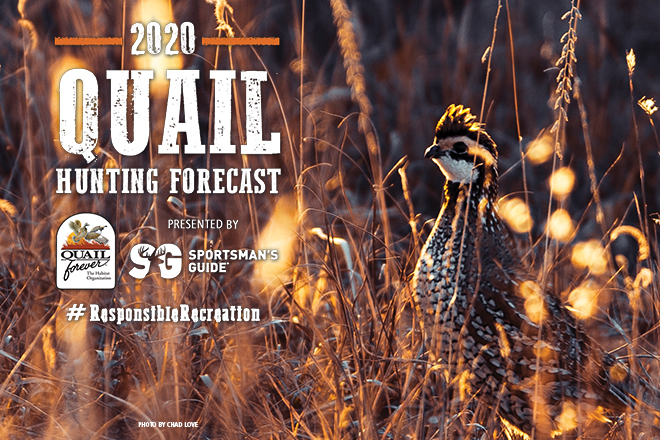 By Oliver Hartner
If you’re reading this forecast, that means you have a passion for quail. Turn that passion into support by joining, renewing, or upgrading your membership Quail Forever. We are in the business of making habitat for the birds you love. Since its inception in 2005, QF has impacted over 1 million acres of habitat through its chapter volunteers, staff and partnerships. We ARE making a difference, and with your help, we can ensure our children will know the thrill of a staunch dog and a rising covey. Give back to the birds that give us all so much and show your support. Join, renew or extend your membership, and for a limited time get an awesome QF hoodie as our special gift to you!
By Oliver Hartner
If you’re reading this forecast, that means you have a passion for quail. Turn that passion into support by joining, renewing, or upgrading your membership Quail Forever. We are in the business of making habitat for the birds you love. Since its inception in 2005, QF has impacted over 1 million acres of habitat through its chapter volunteers, staff and partnerships. We ARE making a difference, and with your help, we can ensure our children will know the thrill of a staunch dog and a rising covey. Give back to the birds that give us all so much and show your support. Join, renew or extend your membership, and for a limited time get an awesome QF hoodie as our special gift to you!
Cooperative weather conditions in Virginia provided a boon for the quail population, and according to the data, properties with established management practices should see an increase in their covey counts this year.
WEATHER AND CONDITIONS
“Our winter was very mild, with almost no measurable snow, and our quail entered the spring season in excellent condition,” says Marc Puckett, Wildlife Biologist and Small Game Project Leader for the Virginia Department of Wildlife Resources.
Early spring conditions were cool and windy coming out of winter, but pleasant weather and optimal rainfall soon followed. “Other than one brief dry spell in late June to early July, the weather conditions and vegetation have been ideal for raising quail broods,” Puckett says.
August rains brought flooding to parts of southeastern Virginia, and while the flooding might have impacted quail nests in those counties of the state, the adverse effects of these conditions were were not widespread or long-lived.
HABITAT, BROODS AND COUNTS
Puckett and other wildlife biologists see encouraging results from their efforts over the last decade to increase conservation program recruitment. “Overall habitat conditions should be very good where habitat exists. Conservation programs have continued with excellent signup in Virginia, and after having made over 5,000 landowner site visits in the last decade, our team has seen several areas where quail are doing better,” he observes.
Though roadside surveys from this past summer have not been analyzed, ancillary reports from landowners and hunters suggest a good hatch and summer survival rate for quail chicks. Puckett says, “Last year's reports revealed a 2% - 10% increase in quail observed, and hunters last year reported finding 1.6 coveys per hunt and finding a covey about every 2 hours.” Survey data analyzed from the past five years, along with reports from landowners and hunters, suggests a continued upward trend for quail.
TOP SPOTS
Puckett believes Virginia’s wildlife management areas (WMAs) east of Route 29 offer fair to good opportunities for quail and other upland bird hunting. “These areas are especially for woodcock, and when combined with quail a good day can be had, and our quail population continues to be strong in rural areas east of Interstate 95 where pine forestry and agricultural cropping continue on a large scale,” Puckett says. To find upland hunting WMA properties in Virginia, visit:
https://dwr.virginia.gov/hunting/where-to-hunt-in-virginia/.
INSIDER TIP
“Hunters should not overlook hunting back in thinned and burned pines, or along woods edges near cutovers,” Puckett suggests. “Many hunters want to focus on crop fields or food plots, but quail eat large quantities of pine seeds and acorns and acorn fragments. One study showed that over a 20-year period the number one item in quail crops was oak mast.”